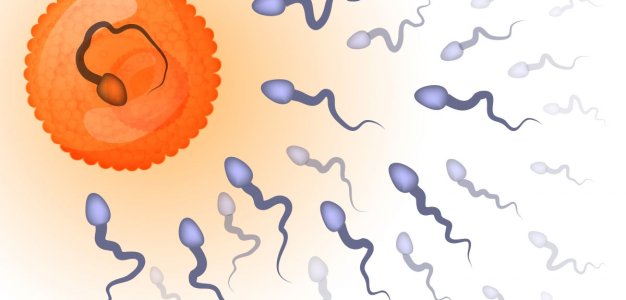From studying the rhythmic movements, researchers at the Universities of York, Birmingham, Oxford and Kyoto University, Japan, have developed a mathematical formula which makes it easier to understand and predict how sperm make the journey to fertilise an egg. This knowledge will help scientists to gauge why some sperm are successful in fertilisation and others are not.
During intercourse, more than 50 million sperm set out to fertilise an egg, but only 10 make it to the final destination, before a single sperm wins the race and makes contact. The journey involved is treacherous and little known, and key to understanding fertility.
The findings, newly published in the journal Physical Review Letters, showed that a sperm’s tail creates a characteristic rhythm that pushes the sperm forward, but also pulls the head backwards and sideways in a coordinated fashion. The team now aim to use this research to understand how larger groups of sperm behave and interact, a task that would be impossible using observational techniques.
By analysing these movements, researchers noticed that a swimming sperm moves the fluid in a coordinated rhythmic way, which can be captured to form a relatively simple mathematical formula. Using this formula in practical medicine could mean that the complex and expensive computer simulations currently used in infertility screening, would no longer be needed.
Dr Hermes Gadêlha, from the University of York’s Department of Mathematics and formerly from Oxford Mathematics, said: "‘Numerical simulations are used to identify the flow around the sperm, but as the structures of the fluid are so complex, the data is particularly challenging to understand and use. Around 55 million spermatozoa are found in a given sample, so it is understandably very difficult to model how they move simultaneously. ‘We wanted to create a mathematical formula that would simplify how we address this problem and make it easier to predict how large numbers of sperm swim. This would help us understand why some sperm succeed and others fail."
The research demonstrated that the sperm has to make multiple contradictory movements, such as moving backwards, in order to propel it forward towards the egg.
The journey to fertilisation is not easy, says Dr Gadelha: "Every time someone tells me they are having a baby, I think it is one of the greatest miracles ever – no-one realises the complexities involved, but the human body has a very sophisticated system of making sure the right cells come together."
Speaking on the value and future uses of the research, Oxford Mathematician, Eamonn Gaffney, co-author,said: "mathematically analysing slow motion video of human sperm swimming reveals a graceful choreography with a surprisingly simple and elegant fluid flow around the cell as it moves. This will make studying the dynamics of sperm populations simpler, which can find numerous applications such as developing a predictive understanding of sperm control in prospective microdevices for sperm handling and isolation in sperm research and assisted reproductive technologies."
Now that the team has a mathematical formula that can predict the fluid movement of one sperm, the next step is to use the model for predictions on larger numbers of cells. The team also believe that it will have implications for new innovations in infertility treatment.


